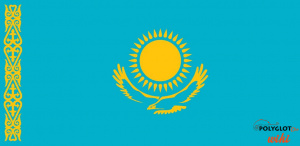Difference between revisions of "Language/Kazakh/Grammar/Vowels"
m (Quick edit) |
m (Quick edit) |
||
| Line 1: | Line 1: | ||
<span pgnav> | |||
{| class="wikitable pg_template_nav" | |||
|[[Language/Kazakh/Grammar/Consonants|◀️ Consonants — Previous Lesson]] | |||
|[[Language/Kazakh/Grammar/Stress-and-Intonation|Next Lesson — Stress and Intonation ▶️]] | |||
|} | |||
</span> | |||
{{Kazakh-Page-Top}} | {{Kazakh-Page-Top}} | ||
| Line 94: | Line 101: | ||
{{Kazakh-Page-Bottom}} | {{Kazakh-Page-Bottom}} | ||
<span links></span> | <span links></span> | ||
<span pgnav> | |||
{| class="wikitable pg_template_nav" | |||
|[[Language/Kazakh/Grammar/Consonants|◀️ Consonants — Previous Lesson]] | |||
|[[Language/Kazakh/Grammar/Stress-and-Intonation|Next Lesson — Stress and Intonation ▶️]] | |||
|} | |||
</span> | |||
Revision as of 18:24, 29 March 2023
| ◀️ Consonants — Previous Lesson | Next Lesson — Stress and Intonation ▶️ |
As a Kazakh language teacher with over 20 years of experience, I am excited to teach you about the rules of vowel sounds and pronunciation in Kazakh. Understanding these fundamental principles will help you communicate effectively and confidently in the language. In this lesson, we will explore the various vowel sounds in Kazakh and their pronunciation rules, with cultural information and interesting facts to supplement your learning experience.
After mastering this lesson, these related pages might interest you: How to Use Be & 0 to A1 Course.
Vowels in Kazakh
Kazakh has a total of eight vowels: a, ä, e, ı, i, o, ö, and u. Vowel sounds can have a significant impact on the meaning of a word, making it essential to grasp these sounds and their pronunciation adequately.
Pronunciation Rules
Here are the pronunciation rules to remember when pronouncing Kazakh vowels:
- A and Ә: These vowels are pronounced similarly to the "a" in "father" and "cat," with "Ә" sounding slightly shorter and sharper than "A."
- E: This vowel is similar to "e" in "pet" and "let."
- I and Ы: Both "I" and "Ы" have a similar sound like the "i" in "bit," though "Ы" sounds more like the "i" in "bit" than "I."
- O and Ö: Both sound like the "o" in "lore" and "gore," with "Ö" pronounced with rounded lips.
- U: This vowel is pronounced similarly to "u" in "put" and "but."
However, please note that these sounds are not always consistent with English vowel sounds, meaning pronunciation can be challenging. With that in mind, practising your pronunciation by listening and mimicking native speakers is crucial for language proficiency.
Examples
Here is a table of some common Kazakh words with their vowels' pronunciation rules:
| Kazakh | Pronunciation | English |
|---|---|---|
| Алма (Alma) | /ɑl.mɑ/ | Apple |
| Бәреке (Bäreke) | /bæ.re.kɪ/ | Luck |
| Еркін (Erkin) | /jer.kɪn/ | Freedom |
| Еңбек (Engbek) | /jeŋ.bɛk/ | Labour |
| Орын (Orın) | /o.rən/ | Place |
Tips for Improvement
1. Listen to Kazakh Songs: Songs are an excellent way to learn and practice pronunciation. Listen to Kazakh songs, and sing along to get a grasp of the vowel sounds and their pronunciation rules.
2. Watch Kazakh Movies and TV Shows: Watch Kazakh movies and TV shows to improve your language proficiency further. Listen to the dialogue carefully and try to follow along by repeating what the actors say.
3. Practice Speaking with Native Speakers: Nothing beats practicing with a native speaker. Conversing with a Kazakh speaker will help you gain more confidence, improve your pronunciation, and learn about the culture and traditions.
Conclusion
In summary, Kazakh has eight vowels with varying pronunciation rules. The proper pronunciation of vowels is essential for effective communication in the Kazakh language. By following the above tips and practicing regularly, you can hone your pronunciation skills and become fluent in the Kazakh language.
I hope this lesson has been helpful to you. In our next lesson, we will explore the stress and intonation patterns of Kazakh words and phrases.
Sources
- Kazakh language - Wikipedia
- A Grammar of Kazakh Zura Dotton, Ph.D John Doyle Wagner
- Introduction to the Kazakh Language
- Kazakh Grammar - Consonants
Great work on completing this lesson! Take a moment to investigate these connected pages: Dative Case & Future Tense.
Other Lessons
- Nouns
- Compound Prepositions and Postpositions
- Personal Pronouns
- Possessive Adjectives
- How to Use Be
- Conditional Mood
- Demonstrative Pronouns
- Questions
- Nominative Case
- Imperative Mood
| ◀️ Consonants — Previous Lesson | Next Lesson — Stress and Intonation ▶️ |
